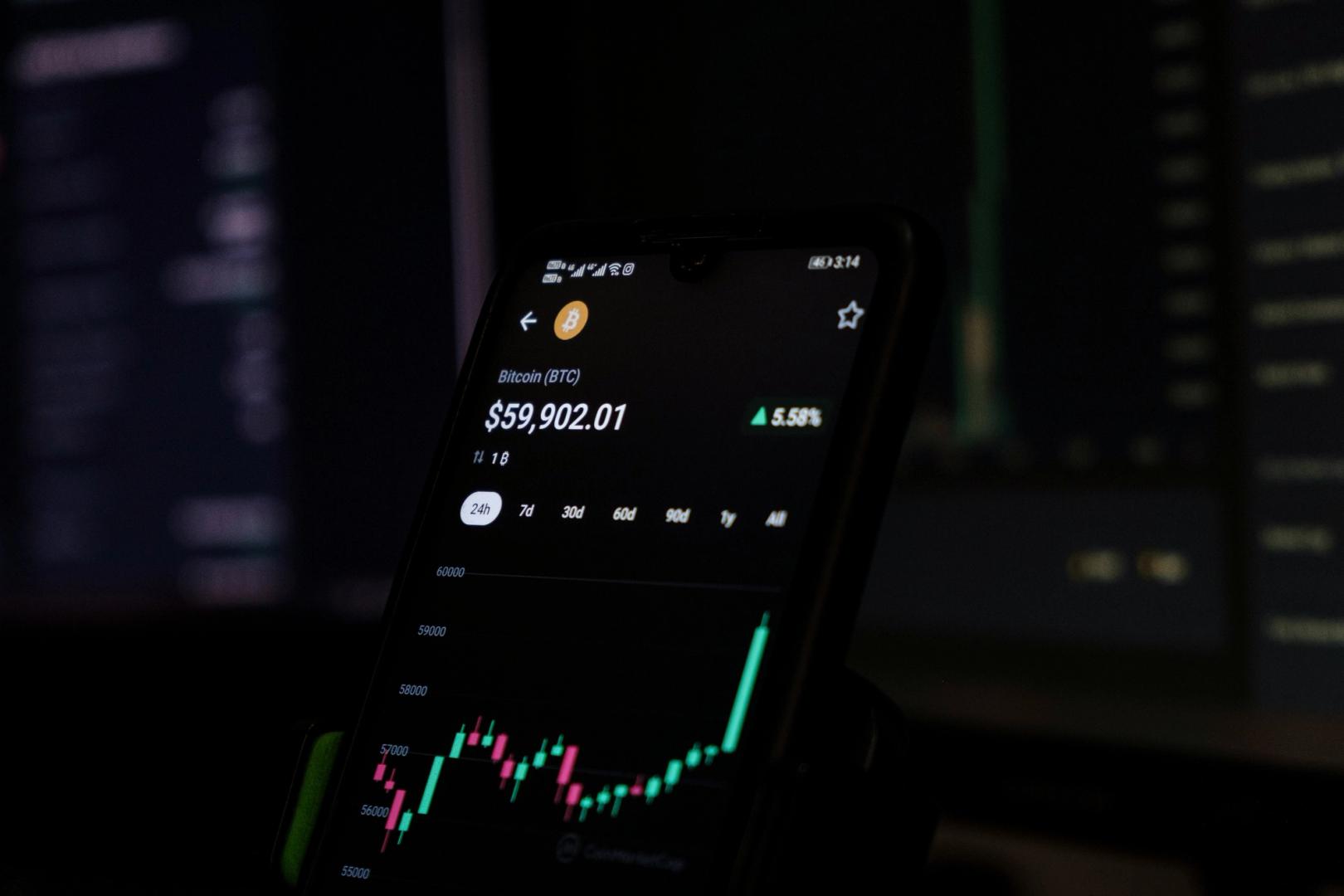Uncategorized
The GPT Gold Rush Is Failing Crypto Traders

The AI revolution in trading should be a game-changer, but instead, it’s become a quick money grab. Everywhere you turn, yet another ChatGPT wrapper is being marketed as the next big thing for crypto traders. The promises? “AI-powered insights,” “next-gen trading signals,” “perfect agentic trading.” The reality? Overhyped, overpriced, and underperforming vaporware that doesn’t scratch the surface of what’s truly needed.
Saad Naja is a speaker at the AI Summit during Consensus 2025, Toronto, May 14-16.
AI should be designed to augment the trader experience, not sideline it. Companies like Spectral Labs and Creator.Bid are innovating with AI agents but risk heading toward vaporware status if they fail to deliver real utility beyond surface-level GPT wrappers. They have an overreliance on Large Language Models (LLMs) like ChatGPT without offering any unique utility, prioritizing AI buzzwords over substance and AI architecture transparency.
AI Agents Should Augment Trading
Combining AI and trading is a transformative leap, for humans to make trading gains more effectively with powerful foresight, investing less time, but not to replace humans from the trading equation entirely. Traders don’t need another emotionless agent with unfettered agency. They need tools that help them trade better, faster, and more confidently in environments that simulate real market volatility before going trading in the real markets.
Too many GPT wrappers rush to market with fluffy, half-baked agents that prey on fear, confusion, and FOMO. With barely-trained Large Language Models (LLMs) and little transparency, some of these AI trading “solutions” reinforce set and forget bad habits.
Trading isn’t just about hyper speed or automation, it’s about thoughtful decision-making. It’s about balancing science with intuition, data with emotion. In this first wave of agent design, what’s missing is the art of the trader’s journey: their skill progression, unique strategy development, and fast evolution through interactive mentorship and simulations.
Just Fancy Calculators
The real innovation lies in developing a meta-model that blends predictive trading LLMs, real-time APIs, sentiment analysis, and on-chain data, while filtering through the chaos of Crypto Twitter.
Emotion and sentiment do move markets. If your AI Trader agent can’t detect when a community flips bullish or bearish, or front-run that signal, it’s a non-starter.
GPT Wrappers rejecting emotion-driven market moves offer lower-risk, lower-reward gains within portfolio optimization. A better agent reads nuance, tone, and psycholinguistics, just as skilled traders do.
And while 20 years of high-quality trading data spanning multiple cycles, markets and instruments is a great start, true mastery comes through engagement and progression loops that stick. The best agents learn from data, people and thrive with coaching.
Better to Lose Pretend Money
Financial systems intimidate most people. Many never start, or blow up fast. Simulated environments help fix that. The thrill of winning, the pain of losing, and the joy of bouncing back are what build resilience and shift gears from sterile chat and voice interfaces.
AI Trader agents should teach this, back-test and simulate trading comeback strategies in virtual trading environments, not just of successful trades but comebacks from the unforeseen events. Think of it like learning to drive: real growth comes from time on the road and close calls, not just reading your state’s handbook.
Simulations can show traders how to spot candlestick patterns, manage risk, adapt to volatility, or respond to new tariff headlines, without losing their heads in the process. By learning through agents, traders can refine strategies and own their positions, win or lose.
Before My Bags, Win My Trust
AI Agents’ life-like responses are fast improving to being indistinguishable from human responses through conversational and contextual depth (closing the “Uncanny Valley” gap). But for traders to accept and trust these agents, they need to feel real, be interactive, intelligent, and relatable.
Agents with personality, ones that vibe like real traders, whether cautious portfolio managers or cautious portfolio optimizers can become trusted copilots. The key to this trust is control. Traders must have the right to refuse or approve the AI Agent’s calls.
On-demand chat access is another lever, alongside visibility of trading gains and comebacks built on the sweat and tears of real traders. The best agents won’t just execute trades, they’ll explain why. They’ll evolve with the trader. They’ll earn access to manage funds only after proving themselves, like interns earning a seat on the trading desk.
Fun, slick AAA aesthetics and progression will keep traders coming back in shared experiences opposed to solo missions. Through tokenization and co-learning models, AI agents could become not just tools, but co-owned assets — solving crypto’s trader liquidity problem along the way.
First-to-market players must be viewed with healthy skepticism. If Trader AI Agents are going to make a real impact, they must move beyond sterile chat interfaces and become dynamic, educational, and emotionally intelligent.
Until then, GPT wrappers remain what they are slick distractions dressed up as innovation, extracting more value from users than they deliver, as the AI token market correction indicated.
The convergence of AI and crypto should empower traders. With the right incentives and a trader-first mindset, AI Agents could unlock unprecedented learnings and earnings. Not by replacing the trader but by evolving them.
Uncategorized
Can Bitcoin Benefit From Trump Firing Powell? Turkey’s Lira Crisis May Provide Clues

The week has begun on an interesting note, with the U.S. dollar crashing to three-year lows alongside losses on Wall Street, yet bitcoin, which usually follows the sentiment on Wall Street, stands tall.
This could just be the beginning.
The shift away from the USD and toward seizure and censorship-resistant assets like BTC and stablecoins could accelerate if President Donald Trump follows through with his reported plans to fire Federal Reserve Chairman Jerome Powell, which have pushed the DXY and U.S. stock markets lower today.
That’s the lesson from Turkey, which has seen its currency, the lira (TRY), collapse over the years mainly due to President Recep Tayyip Erdogan’s repeated interference in the central bank’s operations. The sliding lira has triggered a capital flight into BTC and stablecoins since at least 2020-21.
Trump’s issues with the Fed
Trump has feuded publicly with the Federal Reserve and its chairman, Jerome Powell, for years, criticizing Powell for being too late on rate cuts even during his first term when interest rates were way lower than today.
However, Trump’s criticism has recently reached a fever pitch with reports suggesting he is looking for ways to get rid of Powell, who recently warned of stagflation even as the President reiterated calls for lower borrowing costs while suggesting there is no inflation.
Powell’s patient approach follows a trade war-led spike in survey-based measures of inflation expectations, which could always become self-fulfilling.
Still, on Monday, Trump went further, calling Powell a «major loser» and warning that the economy could slow down unless interest rates are immediately lowered.
Lesson From Turkey
Erdogan began interfering in the central bank’s operations in 2019, and since then, the lira has collapsed sevenfold from 5.3 per dollar to 38 per dollar.
It all started with Turkey’s inflation rate reaching double digits in 2017. It remained elevated in the subsequent year, which prompted the country’s central bank to increase the one-week repo rate from 17.5% to 24% in September 2018.
The move likely didn’t go well with Erodgan, who issued the first decree dismissing Central Bank of Turkey (CBT) governor Murat Cetinkaya in July 2019. From then on until the end of 2021, Erdogan issued multiple decrees dismissing and hiring several CBT officials. Amid all this, inflation remained elevated, and the lira continued to depreciate at an alarming rate.
«We certainly don’t believe in high interest rates. We will pull down inflation and exchange rates with low-rate policy … High rates make the rich richer, the poor poorer. We won’t let that happen,» Erdogan said in 2021.
As of 2025, Turkey faces an inflation rate of nearly 40%, according to data source TradingEconomics.
This episode serves as a cautionary tale for Trump, highlighting that tampering with central bank independence — especially in the face of looming inflation — can erode investor confidence and send the domestic currency into a tailspin.
This does not necessarily mean that the USD will crash exactly like lira but may see significant devaluation.
Perhaps it could prove even more destabilizing for global markets, considering the dollar is a global reserve currency, and the U.S. Treasury market is the bedrock for international finance.
If better sense fails to prevail, U.S. investors may feel incentivized to move away from U.S. assets and into BTC and other alternative investments, just as Turks did.
Uncategorized
Bitcoin Holding Near $87k While Stocks Slump a ‘Strong Sign’ of Maturing BTC Sentiment

Bitcoin (BTC) is taking a stand even as the broader stock market keeps sliding down to its tariff-related lows on Easter Monday.
The top cryptocurrency is up 2.3% in the last 24 hours and now trading for $86,800 for the first time since April 3—the day after the Trump administration unveiled its new tariff policy. Mainly buoyed by bitcoin, the broader market gauge CoinDesk 20 Index has risen 1.17% in the same period of time, with most tokens relatively unchanged.
Crypto-linked stocks have also remained stable, with Coinbase (COIN) and Strategy (MSTR) down 1.2% and 1.3% respectively, and major bitcoin miners such as MARA Holdings (MARA), Riot Platforms (RIOT), and Core Scientific (CORZ) slumping between 2% and 3%.
The crypto market’s resilience is noteworthy considering that the S&P 500, Nasdaq, and Dow Jones have gone lower by 3.35%, 3.5% and 3.27% respectively, making their way back down to the tariff-related lows of two weeks ago.
Gold, meanwhile, is up 2.9% and is now trading for $3,400, while the DXY (an index that measures the strength of the dollar against a basket of other currencies) reached its lowest level in three years.
“Was today’s tandem rally in bitcoin and gold merely holiday-driven noise, or a meaningful shift towards bitcoin as a safe-haven asset? The latter would mark a material change in how traditional finance views bitcoin,» analysts at crypto trading firm QCP Capital wrote.
«With Europe still on holiday, market confirmation may take a few more sessions. The correlation between bitcoin, gold and equities is one to watch closely.»
Meanwhile, Lawrence McDonald, former head of U.S. Macro Strategy at French investment bank Société Générale, said that it may be time to sell gold in favor of bitcoin.
“Bitcoin has NEVER held up this well with a VIX near 30,” he posted on X, calling bitcoin’s resilience a game-changer. “This is a strong sign of a maturing bitcoin market (good news) and colossal encroaching fiat currency stress, USD.”

The weakness of stocks and the U.S. dollar, put into perspective with bitcoin and gold’s strength, may be due to investors’ concerns about Trump potentially looking to fire Federal Reserve Chair Jerome Powell.
Earlier on Monday, U.S. President Donald Trump continued putting pressure on Powell, whom he called a “major loser” in a Truth Social post, sending an already shaky stock market even lower.
Trump demanded that Powell and his team lower interest rates “NOW,” arguing that there is currently “virtually no inflation” and that costs for many things are declining. Nevertheless, Trump said there’s a threat that the economy will slow down unless the Fed cuts rates.
Powell’s term, which started when he was appointed by Trump himself during his first four years in the Oval Office, is set to end in May 2026, but Trump has been trying to find a legal way to fire Powell beforehand.
The Fed Chair has previously argued that there is no possible way for the U.S. President to remove him under the law.
Uncategorized
Vitalik Buterin Proposes Replacing Ethereum’s EVM With RISC-V

Ethereum co-founder Vitalik Buterin shared a new proposal over the weekend that would radically overhaul the system that powers its smart contracts.
Buterin’s suggestion, which he posted on Ethereum’s primary developer forum, involves replacing the Ethereum Virtual Machine, the software engine that powers programs on the network, with RISC-V, a popular open-source framework that offers built-in encryption and other benefits. .
The EVM is a key piece of Ethereum’s underlying design and has been seen as one of the main elements that helped the network succeed in a crowded field of other blockchains. Many non-Ethereum networks have used the EVM to build their own chains, as has a growing ecosystem of layer-2 networks built atop Ethereum, including Coinbase’s Base chain.
The EVM has long played an essential role in Ethereum’s development. Other chains that use it can seamlessly connect with apps on Ethereum, and developers on EVM-based networks can transition more smoothly to building applications directly within the Ethereum ecosystem.
Buterin argued that transitioning Ethereum to a RISC-V architecture will “greatly improve the efficiency of the Ethereum execution layer, resolving one of the primary scaling bottlenecks, and can also greatly improve the execution layer’s simplicity.” (The execution layer is the part of the network that reads smart contracts.)
The RISC-V architecture, which has seen limited adoption in other blockchain ecosystems, like Polkadot, could offer «efficiency gains over 100x» for certain kinds of applications, according to Buterin. These improvements could reduce the network’s costs — long seen as a major barrier to adoption.
Among the primary benefits of RISC-V is its native support for certain kinds of encryption. Transitioning to the new architecture could, in Buterin’s view, be a simpler alternative to the community’s current plan, which involves rebuilding the EVM around zero-knowledge cryptography.
Buterin’s proposal is something developers would tackle over the long term, comparable to projects like the Beam Chain, which is looking to revamp Ethereum’s consensus layer.
The RISC-V comes at a time of broader soul-searching for the Ethereum community. Recently, transaction volumes have declined, and Ethereum’s token has lagged behind the broader market.
Earlier this year, the Ethereum Foundation, the primary non-profit that supports the development of the broader Ethereum ecosystem, underwent a leadership transition in an attempt to remedy the impression among community members that the ecosystem lacked a clear roadmap and was losing its lead compared to competitors.
Read more: Top Ethereum Researcher’s Dramatic Proposal Draws Standing-Room-Only Crowd in Bangkok
-

 Fashion6 месяцев ago
Fashion6 месяцев agoThese \’90s fashion trends are making a comeback in 2017
-

 Entertainment6 месяцев ago
Entertainment6 месяцев agoThe final 6 \’Game of Thrones\’ episodes might feel like a full season
-

 Fashion6 месяцев ago
Fashion6 месяцев agoAccording to Dior Couture, this taboo fashion accessory is back
-

 Entertainment6 месяцев ago
Entertainment6 месяцев agoThe old and New Edition cast comes together to perform
-

 Sports6 месяцев ago
Sports6 месяцев agoPhillies\’ Aaron Altherr makes mind-boggling barehanded play
-

 Business6 месяцев ago
Business6 месяцев agoUber and Lyft are finally available in all of New York State
-

 Entertainment6 месяцев ago
Entertainment6 месяцев agoDisney\’s live-action Aladdin finally finds its stars
-

 Sports6 месяцев ago
Sports6 месяцев agoSteph Curry finally got the contract he deserves from the Warriors





